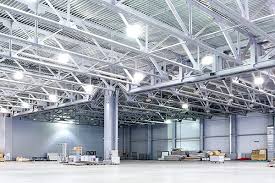Contracts for Difference (cfd how it works) have evolved significantly since their inception, offering traders the ability to speculate on price movements across various asset classes without owning the underlying assets. As technology and market dynamics continue to advance, the CFD trading landscape is set to undergo further transformation. This article explores the emerging trends that are shaping the future of CFD trading.
Technological Advancements
1. Artificial Intelligence and Machine Learning
Artificial Intelligence (AI) and Machine Learning (ML) are revolutionizing CFD trading. These technologies enable traders to analyze vast amounts of data quickly and accurately, identifying patterns and making predictions that were previously impossible. AI-driven algorithms can optimize trading strategies, enhance risk management, and automate complex trading decisions. As AI and ML technologies continue to mature, their integration into CFD trading platforms will become more sophisticated, providing traders with powerful tools for gaining a competitive edge.
2. Blockchain Technology
Blockchain technology is set to impact CFD trading by enhancing transparency, security, and efficiency. Blockchain can provide a decentralized and immutable ledger for recording transactions, reducing the risk of fraud and manipulation. Smart contracts, powered by blockchain, can automate trade execution and settlement, ensuring faster and more reliable transactions. As blockchain adoption grows, CFD trading platforms leveraging this technology will likely attract more traders seeking a secure and transparent trading environment.
3. Enhanced Trading Platforms
Trading platforms are continuously evolving to offer more advanced features and better user experiences. Future platforms will likely include more intuitive interfaces, real-time analytics, and comprehensive educational resources. The integration of social trading features, where traders can share insights and strategies, will further democratize access to market knowledge. These enhancements will make CFD trading more accessible and efficient for both novice and experienced traders.
Market Dynamics
1. Regulatory Developments
Regulation is a crucial factor shaping the future of CFD trading. Regulatory bodies worldwide are implementing stricter measures to protect retail investors and ensure market integrity. These measures include leverage caps, mandatory risk disclosures, and enhanced reporting requirements. While increased regulation may initially pose challenges for brokers and traders, it ultimately aims to create a safer and more transparent trading environment. Brokers that adapt to these regulatory changes and maintain compliance will likely gain trust and credibility among traders.
2. Increased Institutional Participation
Institutional participation in CFD trading is on the rise, driven by the search for diversified investment opportunities and sophisticated trading strategies. Institutions such as hedge funds, asset managers, and proprietary trading firms are increasingly leveraging CFDs to hedge risks and capitalize on market opportunities. This trend is expected to continue, leading to higher liquidity and potentially more stable markets. Institutional involvement will also drive demand for more advanced trading platforms and analytical tools.
3. Expansion into New Markets
The expansion of CFD trading into emerging markets presents significant growth opportunities. As more countries develop their financial markets and regulatory frameworks, CFD trading will become accessible to a broader audience. This expansion will increase market diversity and provide traders with new opportunities to capitalize on global economic trends. Brokers that establish a presence in these emerging markets early on will benefit from first-mover advantages and a growing client base.
Changing Trader Behavior
1. Rise of the Retail Trader
The rise of retail traders, fueled by the accessibility of online trading platforms and educational resources, is a notable trend in CFD trading. Retail traders are becoming more informed and sophisticated, utilizing advanced tools and strategies previously reserved for institutional investors. This shift is driving brokers to offer more comprehensive support, including personalized trading advice, educational content, and robust customer service.
2. Sustainable and Ethical Trading
Sustainable and ethical trading is gaining traction as traders become more conscious of the impact of their investments. Traders are increasingly seeking out brokers that offer ethical trading practices, such as transparent fee structures, responsible marketing, and sustainable investment options. This trend is pushing brokers to adopt more ethical practices and align their offerings with the values of their clients.
Conclusion
The future of CFD trading is shaped by a convergence of technological advancements, market dynamics, and changing trader behavior. Emerging trends such as AI and ML, blockchain technology, enhanced trading platforms, increased regulation, institutional participation, and the rise of retail and ethical trading are set to redefine the CFD trading landscape. As these trends continue to evolve, traders and brokers alike must adapt to stay competitive and capitalize on new opportunities. By embracing innovation and adhering to best practices, the CFD trading industry can look forward to a dynamic and prosperous future.


